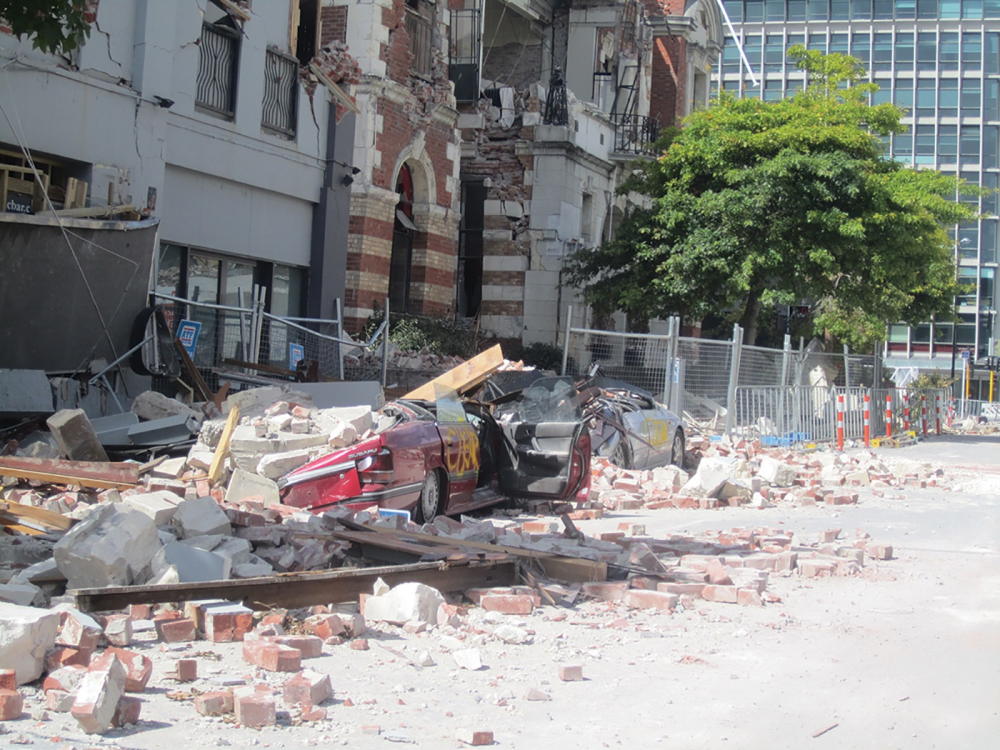
House and apartment owners who have their premises insured have every reason to keep a lookout for the results of a Treasury review of the country’s hazard liability risks.
It will almost certainly lead to a rise in levies for natural disaster insurance because the
$6 billion accumulated by the Natural Hazards Fund as reserves from which payouts are made was severely depleted following the Christchurch earthquakes.
An outcome is expected to be a recommendation that the current cap of $552 (including GST) on the amount paid by homeowners be raised significantly to replenish reserves. Officials say the run-down of reserves to meet claims arising from the earthquakes was such that the need for a significant top-up is urgent.
Appetite within government for any major change to the scheme is low. The focus tends to be on the potential disaster to the nation’s finances should a region-wide earthquake, tsunami or major subsidence occur before the fund is restored to a prudent level.
While Treasury’s work is likely to include discussion with a wide cross-section of financial entities, including insurance companies, banks, and consumer groups, it seems there is one private citizen whose ideas for change have been made public.
David Middleton headed up the Earthquake Commission (EQC) for about 17 years. He has told Wellington’s The Post that he believes fundamental reform of the system is warranted. His suggestions for reform include homeowners paying the levy directly to the EQC’s successor body, the Natural Hazards Commission, instead of to their private insurance company; removal of the cap on levy payments; and a restructure of the payments system so home owners pay according to the size of the home insured – less for smaller homes and more for bigger homes.
Effectively his proposals, if adopted, would lead to a situation in which private insurers would not need to offer natural hazard insurance, but instead focus on fire and accident liabilities, with an attendant ability to lower premiums. Currently 16c of every $100 home insurance premiums goes from the private insurer to pay the levy up to the capped total of $552 (GST included).
David Middleton claims that if the cap were removed and the levy imposed according to the size of house covered, both homeowners and the commission would be much better off. Private insurers at present meet the cost of rebuild, repair or compensation in the event of an earthquake or other natural hazard disaster only if these exceed $300,000. The initial $300,000 is paid by the commission.
Middleton has noted that when the EQC increased its natural hazards payment from $150,000 to $300,000, his private home insurance still increased by 11 percent even though the hazards payment risk to the insurer had been lowered by $150,000. Other homeowners probably had a similar experience to a greater or lesser extent.
The dominant political issue will be the need to build up the fund from which payments are made. It is not a question of increase or not but one of “how much”! Middleton’s suggested changes could also provoke a debate on the extent to which the government should be in the insurance business.
This is because he has reportedly claimed that his own modelling shows that the changes he is suggesting would be both fairer to homeowners and provide more surety around the adequacy of reserve funds.
Government and insurance company actuaries – experts on risk factors matched to likely outgoings – will be key players on the issue. But equally the position of the Act party will be pivotal. Its free market position – should the government be in the insurance business – is highly pertinent to the outcome of deliberations once Treasury has reported. Act leader David Seymour is minister with responsibilities for the Natural Hazards Commission.
National and NZ First have always supported the EQC role. And there has been general acceptance that without the financial heft that government backing gives the fund, the premiums asked by insurance companies would be prohibitive for most Kiwi homeowners.
Meantime, events conspired to obscure the importance to New Zealand of Prime Minister Christopher Luxon’s visit to Vietnam last month.
In what might eerily be termed a replay of an alternative scenario to the way America conducted its relationships with Hanoi after the Second World War, Luxon established a strategic partnership with Vietnam.
Asian experts in the 1950s argued that traditional hostilities between China and Vietnam suggested a Western friendship scenario with Hanoi would help contain any expansionist objectives of China’s communist leadership. They lost; virulent anti-communist opinions in America won. The result was debilitating years of conflict involving New Zealand across Vietnam.
Now, at a time when China’s influence is spreading in the South Pacific, New Zealand has opened a strategic partnership with Hanoi that might prove a useful alliance in the unfolding development of Chinese policies toward Asia and the Pacific.

Bruce has been an economics and business editor, political and foreign correspondent in Washington, London and Hong Kong. He recently retired as CEO of the Building Industry Federation.




